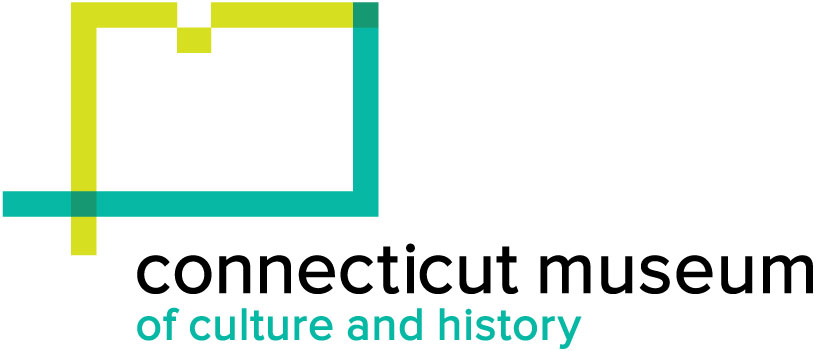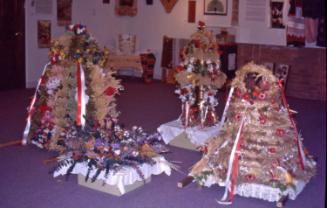Dożynki Festival, New Britain, 2000
Date2000 August
MediumPositive Color Film Slides
ClassificationsGraphics
Credit LineConnecticut Cultural Heritage Arts Program collections
CopyrightIn Copyright
Object number2015.196.1109.1-.2
DescriptionSlide photographs of the New Britain Dożynki Festival in August 2000.
(.1) The Orlęta Polish Folk Dancers performing while wearing traditional costume.
(.2) The Polish harvest ornament displayed at the festival. Dożynki Ornament made by Krystyna Slowiskowska-Farley
for the New Britain Dozynki Festival. Loaned by Ewa Jankowska and the Dozynki Committee
NotesBiographical Note: Orlęta was a Polish traditional dance group founded in Ansonia, Connecticut in 1974 by Helena Knapczyk, a beloved cultural leader in the Polish community. The group was active until at least 2019, perhaps affected by the pandemic in 2020. Orlęta performed widely around Connecticut at Polish clubs and festivals including Dozunki (harvest) celebrations in New Britain, Bridgeport/Ansonia, and Bristol, and at Polish Day at Lake Compounce. They practiced at the White Eagle Polish Society in Bridgeport with their 2018-2020 instructor/choreographer Sylvia Warot.(.1) The Orlęta Polish Folk Dancers performing while wearing traditional costume.
(.2) The Polish harvest ornament displayed at the festival. Dożynki Ornament made by Krystyna Slowiskowska-Farley
for the New Britain Dozynki Festival. Loaned by Ewa Jankowska and the Dozynki Committee
Subject Note: Harvest festivals, Dożynki, were once common in the agricultural regions of Poland. The harvesting of grain for bread was crucial to survival, and many customs in rural Poland were designed to encourage a good crop. As with so many Polish celebrations, spiritual and secular worlds and concerns intertwine at this important time of year. Harvest time in late summer coincided with the religious Feast of the Assumption on August 15, celebrating the ascension of Mary into Heaven. On this feast day called Matka Boska Zielna, or Our Lady of the Herbs, women brought bouquets of herbs and flowers to the church to be blessed so that the healing powers of the plants would strengthen. At home they would place sprigs of herbs behind holy pictures on the wall. Flowers, herbs, and sheaves of wheat and rye were made into ornaments for dożynki celebrations. Some of these were large and heavy, symbolizing an abundant harvest, and some were shaped to suggest figures or topped with religious statues. Those involved in the harvest also fashioned dożynki wreaths in the shape of a crown out of grains, flowers, nuts, fruit, and ribbons. A young girl who had worked on the harvest would wear the wreath in procession to the house of the farmer, to whom the wreath would be presented.
In Connecticut several Polish American communities still hold dożynki festivals even though most people live and work in urban or suburban settings rather than on farms. The purpose of dożynki in Polonia is to reinstill an understanding of “Polishness” through using ceremony, music, and objects and values reminiscent of customs from Poland. For nineteen years New Britain has produced a festival featuring an open-air mass with a blessing and distribution of bread, folk dancing, craft and food vendors. Other communities holding annual harvest masses and festivals include Bristol’s St. Stanislaus Kostka Church and parish, and in Bridgeport/Ansonia at the White Eagle Social Club. Elaborate dożynki ornaments are still made and carried into the church during the festivals. While contemporary dożynki celebrations tend to be socials and parish fundraisers rather than agricultural rituals, they retain a strong sense of the way spirituality affects the daily lives of Polish Americans.
Additional materials exist in the CCHAP archive for this community and these activities.
Cataloging Note: This project was made possible in part by the Institute of Museum and Library Services MA-245929-OMS-20.
Status
Not on view2000-2001 December-March
2008 September 6
Polish American Council of Greater New Britain Charities, Inc
2000
Saint Stanislaus Church















